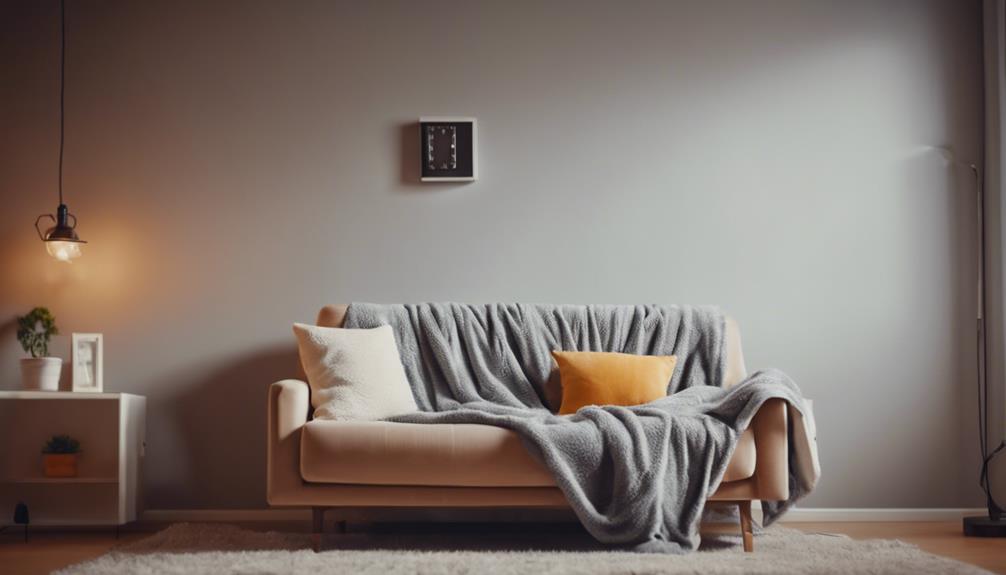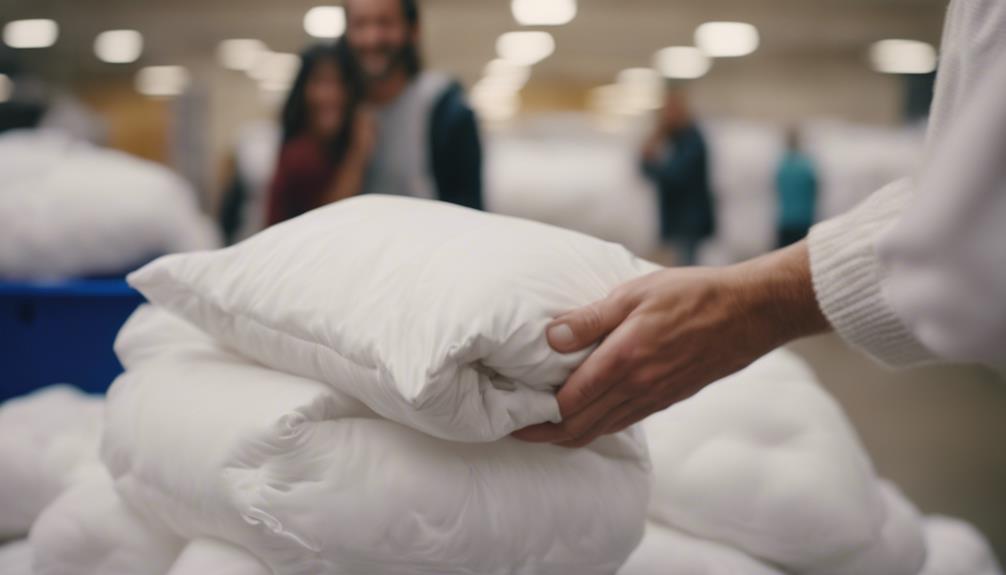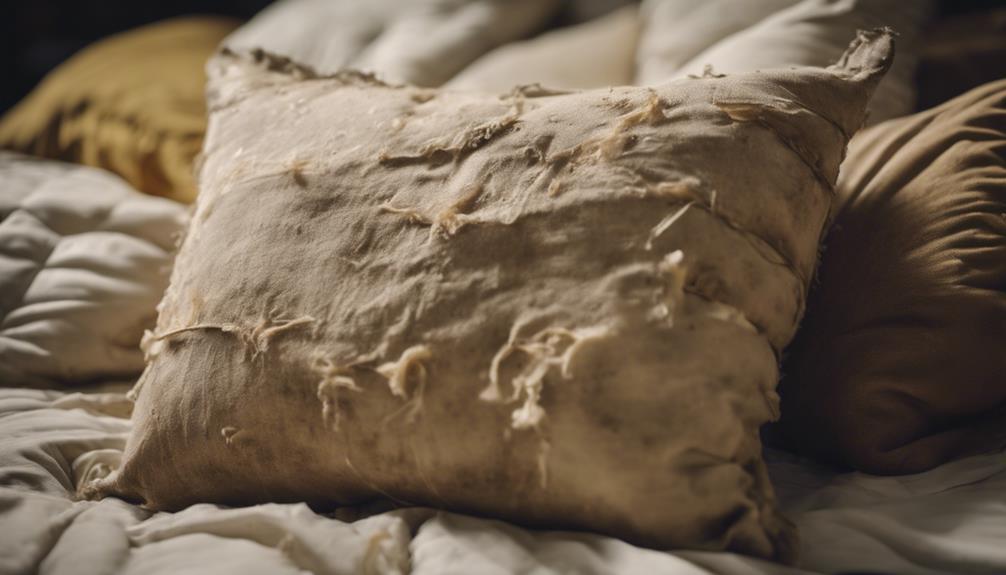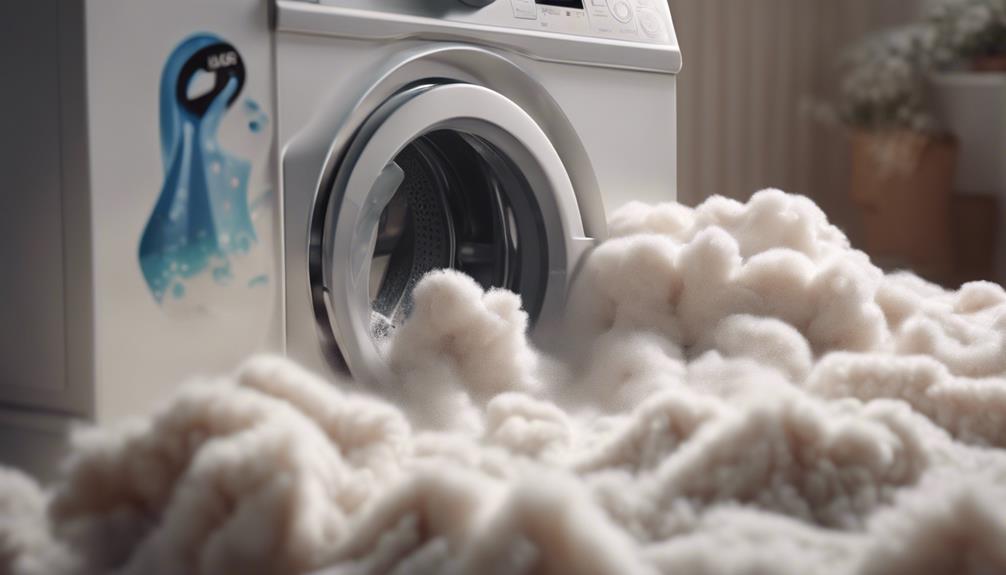Electric throws typically range in cost from $0.06 to $0.12 per hour to operate, depending on the heat output and local electricity rates. If used for 8 hours daily, the monthly bill could increase by around $14 to $28. Choosing energy-efficient models and using a timer for control can help reduce costs. Understanding wattage, consumption, and efficiency is important for accurately estimating expenses. By using electricity wisely, significant savings can be achieved on energy bills. For more information on efficiently using electric throws, refer to the detailed analysis provided.
Key Takeaways
- Electric throws cost between $0.06 to $0.12 per hour to run.
- Factors influencing costs include heat output and local electricity rates.
- Running 8 hours daily can add $14 to $28 to monthly bills.
- Energy-efficient models help reduce overall running expenses.
- Using a timer for control can further save on electricity costs.
Average Cost of Running Electric Throws
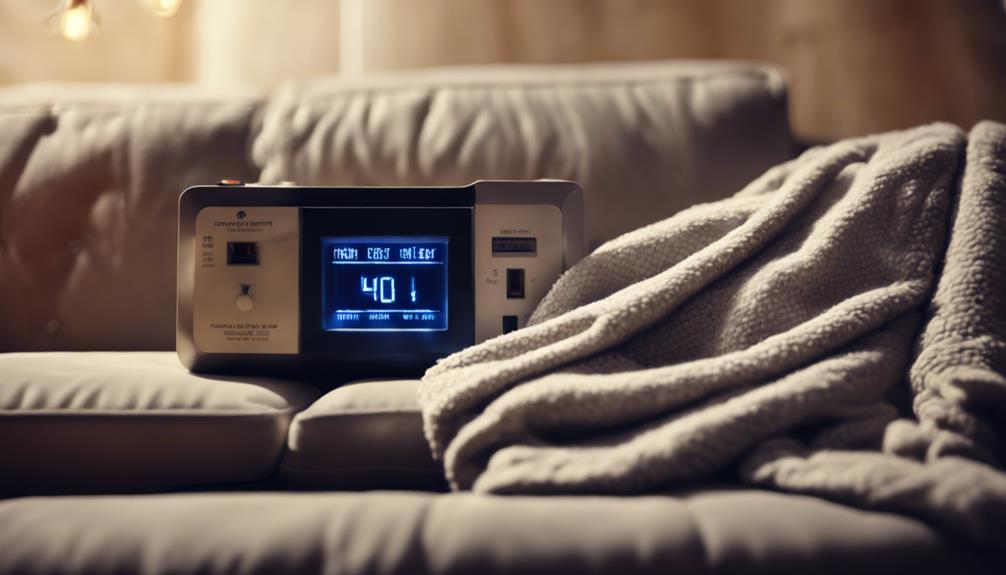
When estimating the average cost of running electric throws, it's essential to take into account factors such as wattage and settings to determine the hourly running expenses accurately. Electric throws typically range from 2 to 4p per hour in running costs, with the actual expense varying depending on the wattage and efficiency of the blanket.
A key consideration is the electricity consumption, which averages between 60 to 120 watts per hour during operation. These details play a significant role in determining the overall running cost of an electric throw.
Compared to alternative heating solutions like room heaters, electric throws offer a cost-effective option for keeping warm. By understanding the wattage, electricity consumption, and efficiency of the electric blanket, individuals can make informed decisions when estimating running costs. This knowledge empowers users to effectively manage their expenses while enjoying the comfort and warmth provided by an electric throw.
Factors Affecting Electric Throw Costs
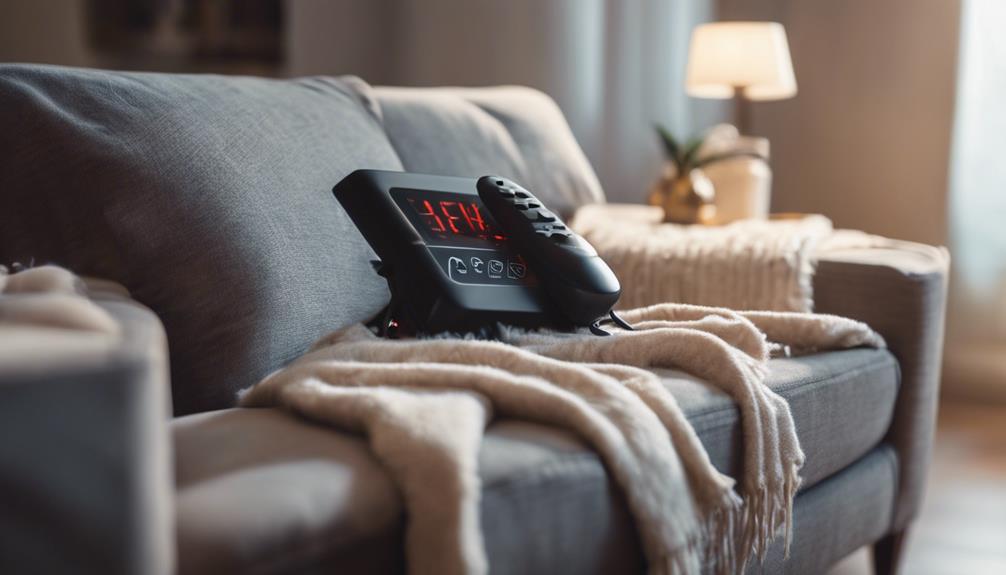
To understand the factors influencing electric throw costs, we analyze the wattage range and its direct correlation to running expenses. The wattage of an electric blanket typically falls between 50 to 200 watts. Electric throws costing around 10 cents per kilowatt-hour can run for about 5 to 20 cents per hour, depending on their wattage.
Higher wattage electric blankets will naturally incur higher running costs compared to lower wattage models. Calculating the cost involves knowing the wattage of the electric throw and the duration of use; this basic calculation can help estimate running expenses accurately.
Opting for energy-efficient electric throws with lower wattage can offer a more cost-effective heating solution in the long run, as they consume less electricity per hour of use. When considering purchasing an electric blanket, factoring in the wattage is essential to managing running costs effectively.
Comparing Electric Throw Costs to Other Appliances
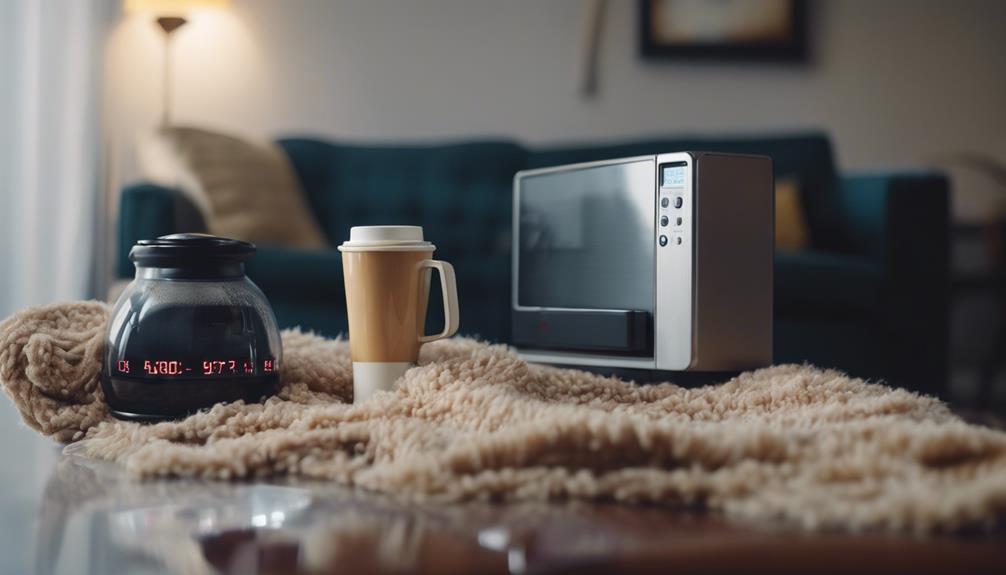
Comparing the costs of running electric throws to those of other appliances reveals their energy efficiency and cost-effectiveness. Electric throws typically cost around 2.2p per hour to run, depending on the wattage and usage patterns. This cost is comparable to running a fridge-freezer along with another small appliance regarding energy consumption.
Understanding the wattage and duration of usage is vital for accurately estimating the running costs of an electric throw. When compared to traditional room heaters, electric throws offer a cost-effective and energy-efficient heating option.
To optimize energy consumption and reduce running costs, monitoring usage patterns and adjusting heating settings are essential. By actively managing how and when you use your electric throw, you can make sure that it remains a budget-friendly choice for staying warm and cozy.
Monitoring and Managing Electric Throw Usage

Tracking the usage of electric throws can provide valuable insights into energy consumption patterns. By monitoring how often and for how long these throws are used, we can better manage electricity costs.
Implementing energy-saving strategies, such as adjusting heating settings and limiting usage duration, can help in optimizing the efficiency of electric throws.
Usage Tracking Tips
One effective way to monitor and manage electric throw usage is by using a plug-in power monitor to track daily electricity consumption. By monitoring the wattage and duration of usage, you can calculate the exact cost of running the electric throw.
It's essential to take into account variations in heating settings as they can impact overall energy consumption. Additionally, any illness affecting usage patterns should be factored in when tracking the electric throw's usage.
Running an electric throw can cost around 2.2p per hour, similar to the consumption of a fridge-freezer or another appliance. By tracking these factors closely, you can better understand and manage the energy consumption associated with using an electric throw.
Energy Saving Strategies
To optimize energy efficiency when using an electric throw, it's valuable to test different appliances and adjust heating settings accordingly. Monitoring the wattage and usage duration of the electric throw is essential for managing energy costs effectively.
Utilizing a plug-in power monitor or an energy-saving power meter can help track the electric throw's consumption in real-time. Understanding how personal habits or illness may impact electric throw usage can provide insights into overall energy consumption patterns.
Running an electric throw for an hour typically costs around 2.2 pence, which is equivalent to the consumption of a fridge-freezer plus one additional appliance. By being mindful of appliance consumption, heating settings, and usage duration, individuals can make informed decisions to save on energy costs while using their electric throw efficiently.
Understanding Electricity Consumption of Electric Throws
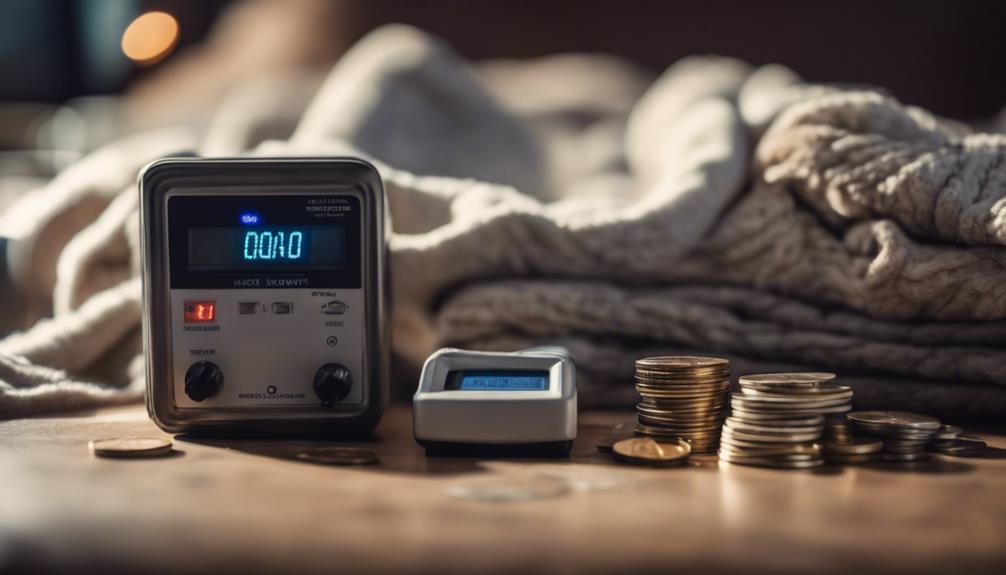
Electric throws vary in wattage, typically ranging from 60 to 120 watts per hour, influencing their running costs. Calculating the expense involves considering the electricity rate in your area alongside the throw's wattage.
Opting for energy-efficient models with lower wattage can lead to decreased running costs, offering a more economical choice for users.
Energy Usage Breakdown
Exploring the breakdown of energy usage provides valuable insight into the electricity consumption of electric throws. The wattage of these throws typically ranges from 60 to 120 watts per hour, translating to costs of about 0.7 to 1.4 cents hourly.
Running an electric throw for 8 hours daily could result in daily electricity costs of 5.6 to 11.2 cents. When considering monthly usage based on 8 hours of daily operation, expenses may vary from $1.68 to $3.36.
It's essential to grasp the wattage of the electric throw since higher wattage models can lead to increased running costs compared to lower wattage options. Understanding wattage plays a key role in accurately estimating the overall running expenses.
Cost Calculation Methods
When estimating the cost of running electric throws, it's crucial to take into account the electricity consumption. Electric throws typically consume 60-100 watts per hour. To calculate the cost, multiply the wattage by the hours used and the electricity rate per kilowatt-hour.
For example, running an electric throw for 8 hours at night can cost between 10-17 cents. Energy-efficient throws may cost less than 2 cents per hour to run, potentially reducing overall electricity costs. However, higher wattage throws or longer usage times will lead to increased electricity expenses.
These factors must be taken into consideration when estimating the cost of running electric throws to better manage energy bills.
Efficiency Tips for Throws
Understanding the electricity consumption of electric throws is crucial to maximizing their efficiency and minimizing operating costs. Electric throws typically consume 100-150 watts per hour, costing 1-2 cents hourly. The total cost depends on wattage, duration of use, and electricity rates.
Strategic use, like running the throw for 8 hours at night (8-16 cents), offers a cost-effective heating option. Energy-efficient electric throws deliver targeted warmth using minimal electricity.
To manage running costs effectively, know your throw's wattage and usage patterns. By choosing an energy-efficient model and using it strategically, you can enjoy the comfort and warmth of electric throws without worrying about high electricity bills.
Tips for Efficiently Running Electric Throws
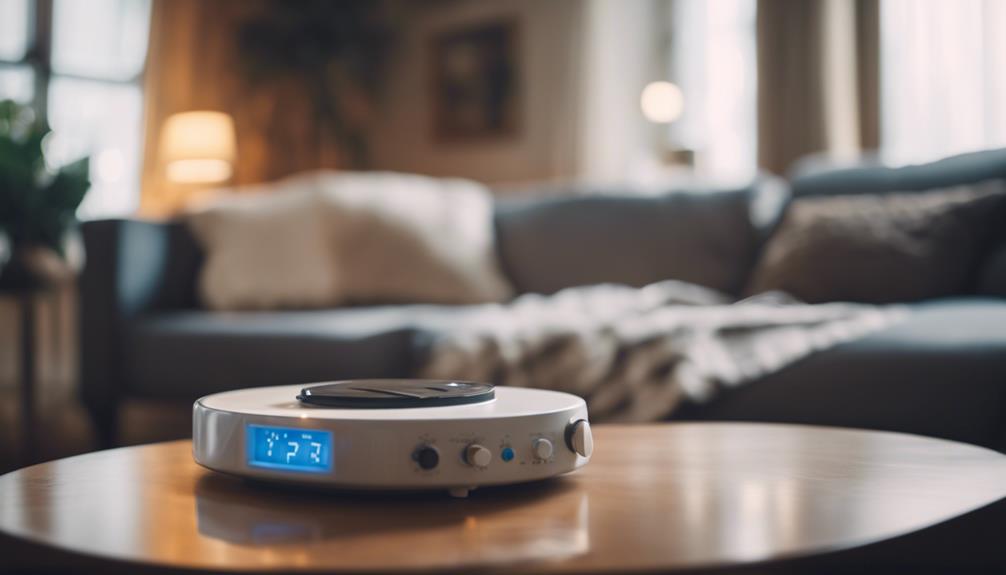
To maximize efficiency when running electric throws, consider adjusting the temperature setting to lower costs while still maintaining warmth. Lowering the temperature setting not only helps in reducing running costs but also guarantees that you aren't overheating the room unnecessarily.
Using a timer is another valuable tip to save energy and money. By setting a timer to automatically turn off the electric throw after a specific period, you can avoid running it longer than needed.
Investing in an energy-efficient electric throw with adjustable heat settings can further optimize running costs by allowing you to tailor the heat output to your comfort level.
Regular maintenance is important for the efficiency of electric throws. Check for any damage and ensure proper insulation to prevent heat loss.
Frequently Asked Questions
Are Electric Throws Cheap to Run?
Electric throws are indeed cost-effective to run, offering warmth at a fraction of the cost of traditional heating methods. Compared to electric heaters, which can be notably pricier to operate, electric throws provide a more affordable option for heating.
Their minimal electricity consumption makes them a practical choice for maintaining comfort without breaking the bank. So, yes, electric throws are cheap to run and offer an efficient way to stay warm during colder seasons.
Does an Electric Throw Use a Lot of Electricity?
We've all wondered if electric throws guzzle electricity. Luckily, they're quite efficient, using 60-120 watts per hour. This translates to a mere 1.2-2.4 cents per hour, much less than central heating.
By multiplying the wattage by daily usage hours and electricity rate, you can estimate monthly costs accurately. Understanding these patterns helps manage electricity consumption effectively.
Are Electric Throw Blankets Energy Efficient?
Electric throw blankets are indeed energy-efficient. They typically consume around 100-150 watts per hour, costing only 2-4 cents per hour to run. Compared to room heaters, they offer significant energy savings. Using them for targeted warmth is more efficient than heating entire rooms.
Adjusting usage duration and temperature settings can easily manage energy consumption. Overall, electric throw blankets are a cost-effective and efficient way to stay warm.
What Is the Difference Between Electric Throw and Electric Blanket?
Electric throws and electric blankets differ in size and function. Throws are smaller, meant for personal use on sofas or chairs, providing localized warmth. Blankets are larger, designed for whole-bed heating.
Throws are portable and versatile, suited for targeted heating needs throughout the house, while blankets are stationary on beds. These distinctions cater to various heating preferences.
What is the average cost to run an electric throw?
The cost to run an electric throw can vary depending on the model and energy efficiency. On average, the cost to run an electric throw for an hour is around 3 to 4 cents. Opting for a higher quality, energy-efficient throw can help reduce the overall cost to run electric throw.
Conclusion
To sum up, running electric throws can vary in cost depending on usage and efficiency. By monitoring and managing usage, as well as implementing tips for efficiency, one can reduce electricity consumption and costs.
Consider the benefits of investing in energy-efficient appliances to save on electricity bills in the long run. Imagine a cozy winter evening wrapped in a warm electric throw, knowing you're saving money while staying comfortable.
